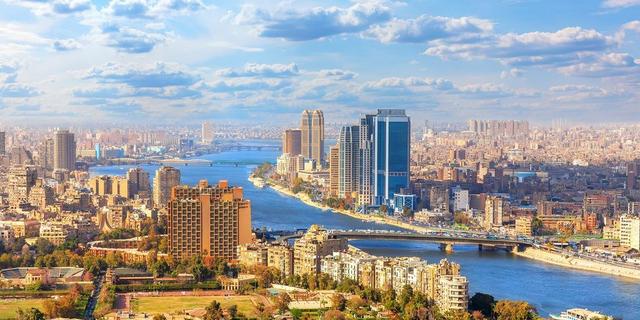Top Ten Fastest Growing Cities In Africa 2023,Rural-urban migration is typically the most significant element contributing to the population growth seen in these flourishing African cities. Because of the population growth in these few cities, large portions of these countries’ total populations are concentrated in a few regions.
A million reasons drive rural-urban migration, including career prospects, security, the existence of more modern amenities in cities, and many others. Of doubt, the problem of population concentration in a few cities brings challenges that are difficult for authorities to address. People will continue to flock toward places where they can find opportunities.
Kigali Daily News Listed such cities heavily populated in Africa 2023, They have been surpassed in terms of the rate at which they are developing.
Top Ten Fastest Growing Cities In Africa 2023
1. Accra, Ghana
Accra, the capital of West Africa’s most promising country, is Africa’s fastest expanding city in terms of population growth and city limits expansion.
The city serves as both Ghana’s economic and administrative center, housing a large number of government and non-governmental organizations such as ministries, courts, and so on. The city is also a financial and commercial hub, including banks, insurance companies, a port, large markets and retail outlets, as well as gold bullions and other business establishments.
Accra is growing at a 49% annual rate. Despite the fact that many of the new parts of the city are shanty towns, many of these locations are welcome new housing developments.
2. Ibadan, Nigeria
Ibadan is Nigeria’s largest city by landmass, and it is not far behind Lagos and Kano in terms of people. Ibadan is renowned as a scholarly city; education is an important component of the city’s history and makeup. Banks, insurance, retail establishments, fashion, and other economic activity can also be found in the city.
The abundance of food also makes it appealing to newcomers from outside the area. Entrepreneurs and craftsmen also flock to Ibadan in great numbers; persons working in agriculture, trade, handicrafts, and manufacturing may discover that their operating costs are significantly lower than in Lagos.
Ibadan saw an increase in population of about 3.7% within the past year, and is expected to continue growing for the next few years.
3. Lagos, Nigeria
Lagos was formerly dubbed Africa’s fastest developing city. While it has lost that title to Accra and even Ibadan, the city’s population and land area continue to expand. Lagos remains a popular destination for people leaving their home cities in pursuit of economic possibilities; people from all over the country, as well as other nations in the area, pick Lagos because they may rapidly find work, particularly in the informal sector.
Lagos has so many big markets, well managed retail outlets, ports, and so on. As the financial capital of Nigeria; the city is home to many banks, insurance companies, educational institutions and manufacturing industries. Lagos has a thriving economy, and even those who work in the service sector can make a lot of money.
Lagos is growing at a rate of 3.7%. The population is expected to reach 27M in 2025.
4. Dakar, Senegal
Dakar is capital of Senegal, another coastal state in West Africa. Senegal lags behind Ghana and Nigeria in terms of development, but has been making progress at its own pace.
Dakar presently has a population of around 1 million people; but the metropolitan area has around 3.5 million residents. That number is rising steadily as people come in from the rural areas in search of jobs in manufacturing, textiles, fish canning, flour milling, brewing, and peanut oil refining. The city also has petroleum refining, truck assembly plants, which provide jobs and contribute to the economy.
Many people also come in for the Dakar Rally, as well as to enjoy the beaches. There are also many museums reflecting the city’s history.
Dakar is projected to grow by 52%; the population is expected to reach 4.5 million by 2025.
5. Abidjan, Côte d’Ivoire
Abidjan, the capital city of Côte d’Ivoire (Ivory Coast), is likewise located along the West African coast of the Atlantic Ocean. This is the city that houses the government’s administrative apparatus as well as the country’s major companies. Abidjan has a population of approximately 6.3 million people, which is expanding as people migrate from rural areas in search of work.
Shipping, hotels, politics and administration, textiles, food processing, lumber, and a variety of other sectors are among the city’s key economic activities. The informal sector is also significant; many persons employed in the service sector fall into this category.
Abidjan is currently growing at a 3.05% annual pace, but this is predicted to increase to 3.17% by 2024, when the population is likely to reach 5.8 million.
6. Addis Ababa, Ethiopia
Ethiopia is one of Africa’s oldest countries, so it’s no wonder that Addis Abeba, its capital city, is expanding rapidly. Addis Abeba has long been an important city for the entire continent; it is home to the African Union and the United Nations Commission for Africa.
Trade and business, industry, animal husbandry, transportation and communication, and so on are some of the economic activities in Addis Abeba. There are numerous hotels, banks, and large markets in the city.
The city currently has a population of roughly 5.6 million people, which is predicted to increase by 6.2 million by 2026. As a result, Addis Abeba is growing by at least 4.46% year on year.
7. Luanda, Angola
Luanda is Angola’s capital and largest city. It is also the administrative capital and the country’s main commercial centre. There are many tall structures all over the place; the administrative buildings of the government are numerous, but there are also many banks, the port, markets, retail outlets, and oil marketers.
Luanda is a major port city; commodities such as oil and other extracted items leave the country via the port, and finished goods from other countries enter via a similar route.
Luanda has a population of over 9.2 million people and is growing at a rate of approximately 3.8% year on year, with the population predicted to reach 9.6 million by 2024.
8. Kinshasa, Democratic Republic of Congo
Kinshasa, formerly known as Léopoldville, is the capital of the Democratic Republic of the Congo. It serves as both the administrative and commercial capital of the country. This is where the government’s arms and organizations are concentrated, and it is from here that the government administers the rest of the country.
Many individuals travel to Kinshasa to find work in the many government institutions, as well as in the manufacturing, food processing, construction, and other businesses.
Banks and other financial organizations can also be found throughout the city. The city’s informal sector is also thriving, employing approximately 9% of the population.
Kinshasa has a population of over 15.6 million people and is growing at a pace of roughly 4.4%.
9. Nairobi, Kenya
Nairobi is Kenya’s capital and largest city. It is also the country’s administrative capital and key financial hub. The city is also significant for its several wildlife conservation centers, as well as its hotels and motels, some of which are highly ranked. There are numerous financial institutions and retail shops in the city. The city also values education, transportation, agriculture, and food.
Nairobi has a population of over 4.3 million people, with a growth rate of approximately 4.2%.
10. Dar es Salaam, Tanzania
Dar es Salaam, and Tanzania as a whole, is quickly becoming well-known as a center of business and industrialization. It is one of East Africa’s key powerhouses. As the country’s administrative center, there are many government establishments in the city, but there are also banks, insurance companies, retail outlets, and manufacturing businesses.
Agriculture, food processing, tourism, and hospitality all give employment opportunities.
Dar es Salaam has a population of 7.75 million people and is expanding at a 5.01% annual rate. By 2024, the population is predicted to reach 8.1 million.


